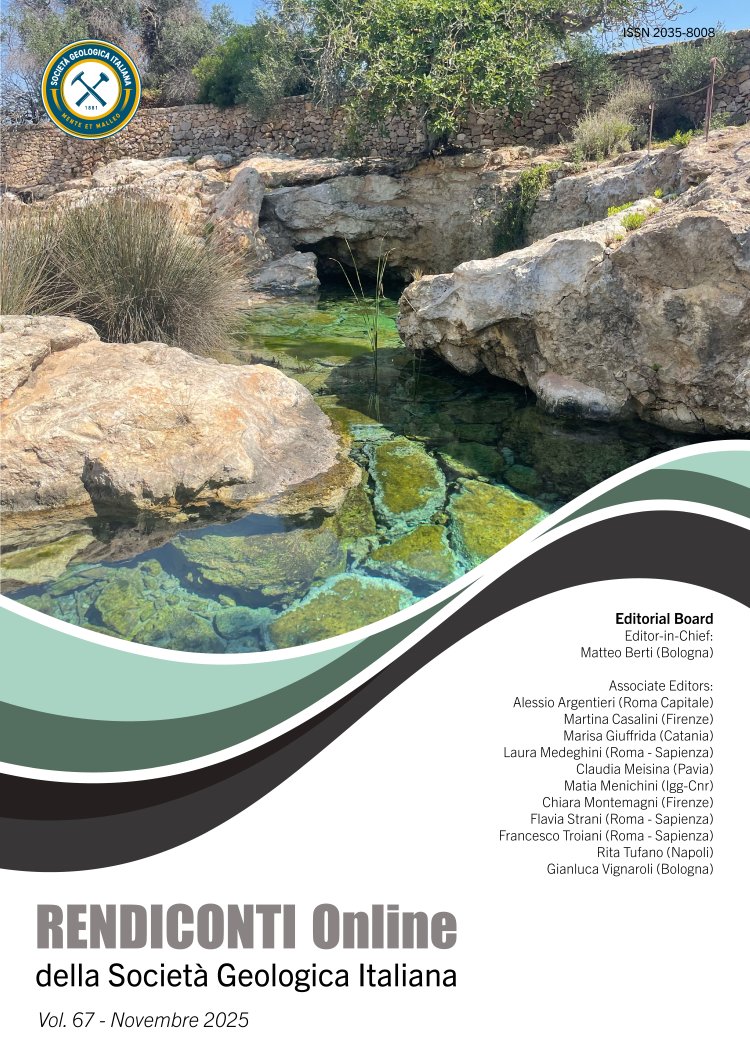

A karst area shared between carbonate megabeds and siliciclastic units: the example of Mt. Bernadia (NE Italy)
Luca Zini1, Chiara Calligaris1, Furio Finocchiaro1,2, Maurizio Ponton2, Michele Potleca3,4 & Paolo Manca3
1Dipartimento di Matematica, Informatica e Geoscienze, Università degli Studi di Trieste, Via Weiss 2, 34128 Trieste (Italy).
2Circolo Speleologico Idrologico Friulano.
3Direzione centrale difesa dell'ambiente, energia e sviluppo sostenibile - Servizio geologico RAFVG, via Sant'Anastasio 3, Trieste (Italy).
4OGS, Istituto Nazionale di Oceanografia e di Geofisica Sperimentale, Borgo Grotta Gigante 42/C, 34010 - Sgonico (Italy).
Corresponding author e-mail: zini@units.it
Volume: 67/2025
Pages: 2-7
Abstract
A significant portion (28%) of the entire Friuli Venezia Giulia Region (FVG) (NE Italy) comprises carbonate aquifers, many of which are extensively karstified and exploited for drinking purposes. Ensuring water availability and protection remains a critical priority to meet the rising demand driven by population growth. In pursuit of this goal, according to the FVG Regional Law 15/2016, the Department of Mathematics, Informatics and Geosciences of the University of Trieste and the Geological Survey of the Friuli Venezia Giulia Region started a multi-year project aimed at identifying regional and crossborder karst aquifers assessing their vulnerability. Among the 130 karst areas recognised, one of the most peculiar is the Mt. Bernadia. Sited in the Julian Prealps, it has a particular hydrogeological and karst context where several megabeds of calcarenites and carbonatic breccias alternate within marls and siliciclastic sandstones of the flysch formations (Paleocene-Eocene). The latter lie on Cretaceous limestones. Megabeds are highly karstified, with important sub-horizontal caves draining groundwaters and impressive caprock sinkholes involving siliciclastic materials. The landscape contrast between the characteristic fluvial landforms and the karst features is striking. In order to improve the knowledge of the Mt. Bernadia aquifer, detailed hydrogeological surveys, and, among the others, dye-tracers were scheduled. The present paper details the results of the dye-experiments realised thanks also to the contribution of the speleological associations, in particular to Circolo Speleologico e Idrologico Friulano and Gruppo Speleologico San Giusto. Data acquired evidenced how carbonate megabeds experience a mature karst where caves and conduits often develop at the contact between carbonates and siliciclastic layers giving rise to peculiar features: caves develop both thanks to solutional and erosional processes. The presence of several sinkholes also in correspondence of a siliciclastic cover, allow anyway a fast and concentrated infiltration of the waters reaching quickly the karst hydrostructure in the megabeds. Here the groundwaters are guided by the dip of the strata and the main tectonic features. Being in a mature karst system, travel times are quite short and as consequence the vulnerability is high.
Keywords
Get Full Text